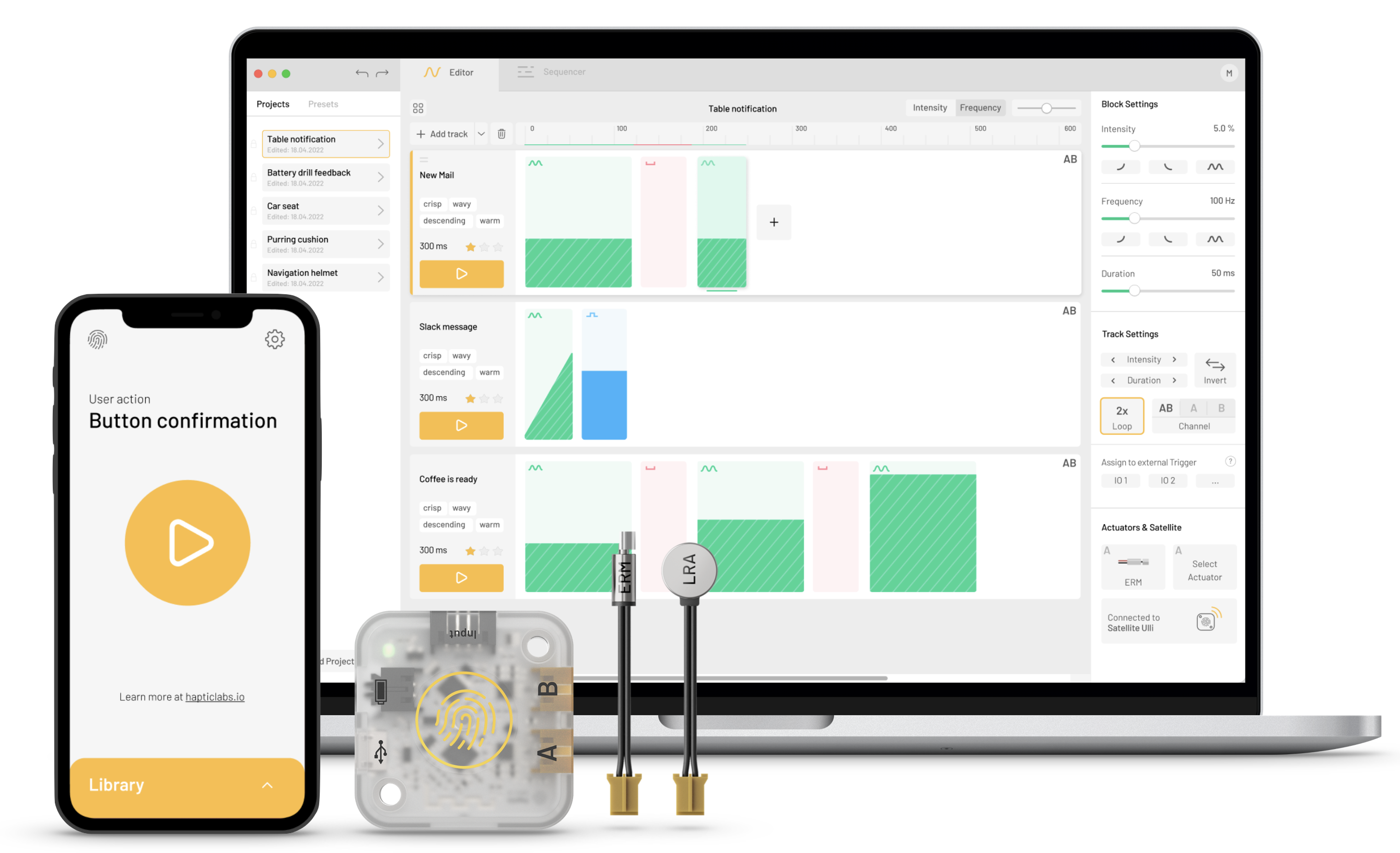Hapticlabs Studio

Tool Summary
| Metadata | |
|---|---|
| Release Yearⓘ The year a tool was first publicly released or discussed in an academic paper. | 2023 |
| Platformⓘ The OS or software framework needed to run the tool. | Windows, macOS, Linux |
| Availabilityⓘ If the tool can be obtained by the public. | Available |
| Licenseⓘ Tye type of license applied to the tool. | Proprietary |
| Venueⓘ The venue(s) for publications. | N/A |
| Intended Use Caseⓘ The primary purposes for which the tool was developed. | Haptics Design and Development |
| Hardware Information | |
|---|---|
| Categoryⓘ The general types of haptic output devices controlled by the tool. | Vibrotactile |
| Abstractionⓘ How broad the type of hardware support is for a tool.
| Class |
| Device Namesⓘ The hardware supported by the tool. This may be incomplete. | iPhone, Android, LRA, ERM, Voice Coil |
| Device Templateⓘ Whether support can be easily extended to new types of devices. | No |
| Body Positionⓘ Parts of the body where stimuli are felt, if the tool explicitly shows this. | N/A |
| Interaction Information | |
|---|---|
| Driving Featureⓘ If haptic content is controlled over time, by other actions, or both. | Time, Action |
| Effect Localizationⓘ How the desired location of stimuli is mapped to the device.
| Device-centric |
| Non-Haptic Mediaⓘ Support for non-haptic media in the workspace, even if just to aid in manual synchronization. | Audio |
| Iterative Playbackⓘ If haptic effects can be played back from the tool to aid in the design process. | Yes |
| Design Approachesⓘ Broadly, the methods available to create a desired effect.
| Direct, Procedural, Library, Description |
| UI Metaphorsⓘ Common UI metaphors that define how a user interacts with a tool.
| Track |
| Storageⓘ How data is stored for import/export or internally to the software. | JSON |
| Connectivityⓘ How the tool can be extended to support new data, devices, and software. | TCP API |
Additional Information
Hapticlabs Studio is a no-code application to design, protoype and develop haptic feedback pattern.
A visual editor allows you to arrange, adjust and orchestrate your signals. You can create variations and tune them to your specific needs. The Hapticlabs AI assistant allows you to generate haptic tracks from scratch and tailor them to your application. Hapticlabs studio offers you various ways to build interactive demos and connect to different output devices, ranging from smartphones to your own custom hardware.
For more information, consult the Hapticlabs website.